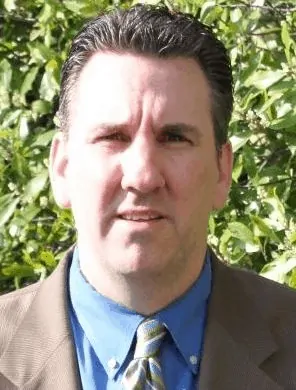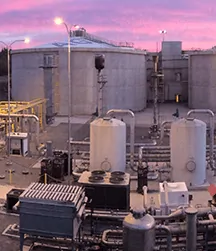

An informative and complete discussion from Jeffrey L. Pierce of SCS Engineers, Energy Practice of siloxanes and landfill gas (LFG) utilization. Plus, presentations on the economics and performance of siloxane removal from biogas; advice on siloxane sampling, analysis and data reporting recommendations on standardization for the biogas utilization industry.
On July 11, 2016, multiple organizations representing the full value chain of cellulosic waste feedstock conversion to transportation fuel sent a letter to Gina McCarthy, Administrator of the U.S. Environmental Protection Agency (EPA). The letter supporting the Renewable Fuel Standard Program: Standards for 2017 and Biomass-Based Diesel Volume for 2018 (Proposed Rule) noted that additional information and factors need to be considered.
Read or share a copy of the letter here, contact SCS Engineers, or one of the organizations below:
On June 1, 2016, the National Waste & Recycling Association (NWRA), the Solid Waste Association of North America (SWANA), and the Coalition for Renewable Natural Gas (RNG Coalition) provide comments on Pipeline Safety: Safety of Gas Transmission and Gathering Pipelines (FR20722) proposed rules to Mr. Mike Israni, Deputy Associate Administrator for Pipeline Safety – Field Operations at U.S. Department of Transportation. Comments by the three not-for-profits were made on behalf of the solid waste industry including companies, municipalities, and professionals.
The letter reflected the solid waste industry support for the efforts made by the Pipeline and Hazardous Materials Safety Administration (PHMSA) to ensure pipeline safety and included comments on the Advance Notice of Proposed Rulemaking, (ANPRM) as follows:
The revised definition for gathering line (onshore) as the basis for determining the beginning and endpoints of each gathering line requires further clarification. The definition remains too broad for applications that do not have the same level of risks since they are not accessible to the public.
PHMSA has elected not to propose rulemaking for landfill gas systems. However, it notes that pipelines that transport landfill gas away from the landfill to another facility are transporting gas and that PHMSA may consider this in the future.
The associations pointed out that the same rulemaking for landfill gas systems should apply to all forms of biogas that are collected and managed in a similar manner to landfill gas. Also noted was that low-pressure gas lines delivering biogas off-site to a dedicated end user need not be considered for further regulation as they do not present the same level of risk that natural gas or other high-pressure gas lines do. Landfill gas/biogas systems fall under federal, state and local regulators. Because landfill gas/biogas systems are regularly inspected for safety, generally use plastic piping, and do not present a substantial risk to the public the Associations feel that it is not necessary to consider additional regulation.
Contact NWRA, SWANA, RNG Coalition or SCS Engineers for more information.
Reprint

The SWANA Landfill Gas and Biogas Division is very busy right now with several important efforts. On the Rules and Regulations front, the U.S. EPA has promulgated two draft landfill gas (LFG) rules that were published in the Federal Register on August 27, 2015. These include a draft Emission Guideline (EG) rule and a supplemental draft New Source Performance Standards (NSPS) rule.
The proposed EG rule affects “existing” landfill sites (i.e., landfills that have not been expanded and were not newly constructed after July 17, 2014). The NSPS rule is a supplemental proposal that affects “new” landfill sites (landfills that are new or were expanded in capacity after July 17, 2014). Comments on both are due by October 26, 2015. Final issuance of both rules is expected in the first quarter of 2016. The Division Rules and Regulation and Advocacy committees are working together to develop SWANA’s industry comments on the rules.
The major focus of both rules is the current 50 Mg/year of non-methane organic compounds (NMOCs) emission threshold, which triggers the installation of a LFG collection and control system (GCCS). In the proposed rules, that threshold will be lowered to 34 Mg/year for all landfills except existing, closed sites. This appears to be the centerpiece of the U.S. EPA’s plan to create additional NMOC and methane reductions from landfills. With a lowered NMOC threshold, some landfills, particularly those that have been too small to trigger the installation of a GCCS, will be required to install them.
Other key components of the draft EG rule, which are likely to be similar in the NSPS rule, include the following:
The draft EG rule also provides clarifications on several existing rule topics, as well as topics where U.S. EPA decided not to include such items in the rule:
During the comment period, the EPA also is looking for public comment on:
The EPA will have the ability to add more provisions to the final version of the rule based on the information submitted as a part of these information requests. This means the industry must make a strong case to the EPA to get them to consider our opinions on these issues.
Comments on this article should be addressed to Patrick S. Sullivan, Senior Vice President, SCS Engineers, at 916-361-1297 or

SCS Energy, a division of SCS Engineers, supported the design | build | operation and maintenance of a new Metrogas high-Btu gas plant located at La Farfana Wastewater
Treatment Plant near Santiago, Chile. La Farfana is owned by Aguas Andinas. Metrogas, the chief natural gas distribution company in Chile, launched commercial operation of their new digester gas to high-Btu gas plant in April, 2015. The plant processes 2,200 scfm (3.17 mmscfd) of raw digester gas, producing 1,238 scfm (1.78 mmscfd) of pipeline quality product gas.
Two different clean-up technologies, membrane and pressure swing adsorption, were considered during the feasibility phase of the project. A membrane based system was ultimately selected for the project. As part of the feasibility study, SCS completed the conceptual design; obtained quotations for the major equipment; and prepared construction and operation | maintenance cost estimates for the plant.
SCS continued working with Metrogas, finishing the detailed design, assisting with equipment procurement, then aiding with the commissioning and start-up services for the plant. The final design includes the removal of moisture, hydrogen sulfide, VOC, siloxane, and carbon dioxide. Oxygen removal is an added benefit of the membrane based system. The plant injects pipeline quality biomethane in to Metrogas’s distribution network.
Learn more by clicking here.
by Jim Walsh, P.E., BCEE

Welcome to SCS Engineers’ redesigned website, including our new technical blogs. On the new website, you will find the environmental resources and solutions we offer and the industries we serve, starting with five inspiring projects and clients. Navigate to pages describing our environmental services and governing policies along with related resources such as: project case studies, articles, white papers, technical bulletins, upcoming events, and blogs written by our resident experts about the environmental information you seek.